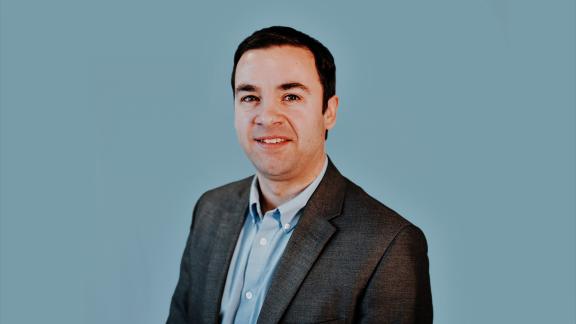Why innovation holds the key to creating the health and care system of the future

Dr Sean Clarkson, head of strategic operations at Yorkshire and Humber AHSN, underlines the importance of retaining the rapid progress made during the pandemic in creating the culture and conditions for innovation, while also calling for a deeper understanding of the linkages between health and the economy.
Anyone who’s been close to the NHS prior to and during the COVID-19 pandemic will recount numerous examples of how the system we see today is a stark contrast to the one we knew before. At the heart of much of this change has been innovation: reimagining how care is delivered and how services are structured; and implementing the latest tools, techniques and best practice.
Enabling innovation to flourish
Innovation has been a mainstay of the NHS for some time. However, a step change in the pace and scale of innovation adoption was observed throughout the pandemic. For example, primary care practices increased usage of online triage from 45 per cent to 85 per cent in a matter of weeks – something which would have previously been inconceivable. While much of this innovation was brought about by necessity, the immense appetite for innovation across the workforce, the empowerment of staff to think differently, and an environment that enables innovation to flourish has been clearly apparent.
While the role and value of innovation within the NHS has been well demonstrated for some time, two key questions remain:
- What is the role of innovation in creating the health and care system of the future?
- How do we build on the progress made during the pandemic and maintain an environment that allows innovation to flourish?
Looking ahead, the NHS needs to tackle both the immediate challenges in the wake of the pandemic and focus on the longer-term future. Research suggests 36 per cent of NHS nurses are thinking of leaving in the next year and the ever-growing patient backlog reached 4.7 million in February 2021.
Innovation can't be mandated
It’s clear we again need to re-think delivery of health and care and chart the course towards a system for the future. Asking an already burnt-out workforce to tackle the backlog isn’t viable and simply recruiting more staff isn’t an option. There is a need to work smarter and to enable this through innovation. However, innovation can’t simply be mandated; capacity and a permission to act within clinical teams is crucial.
Innovation also has a key role in driving the prevention agenda and tackling inequalities through reducing poverty and improving life chances and outcomes
The recently published Life Sciences Vision sets out an ambition for the life sciences sector over the next decade, including the need for an increased focus on prevention and tackling inequalities to drive ‘levelling up.’ While health and the economy may seem disparate, we know they are intrinsically linked. Connections between healthy life choices and income are clear. There is a real opportunity for the NHS to focus more on prevention: reducing inequalities through improving health, and in turn contributing to the economy. A report published last year by Yorkshire and Humber AHSN, NHS Confederation and Yorkshire Universities demonstrated that reducing the number of working-age people with long-term health conditions by just 10 per cent would increase rates of economic activity across the region by 30 per cent.
Innovation also has a key role in driving the prevention agenda and tackling inequalities through reducing poverty and improving life chances and outcomes. While cutting-edge innovations, digital technologies, and inequalities may appear an unexpected combination, there are many examples of innovations that take an equitable approach to improving health outcomes and addressing inequalities.
Key enablers for innovation
The increased appetite for innovation within the NHS was recognised in the AHSN Network Health and Care Reset report and the Best Practice and Innovation report, jointly published by the AHSN Network, NHS Confederation and The Health Foundation. The AHSN Network’s report outlines the key enablers for successful adoption and spread of innovation: the need to value and embrace change, the need for greater devolved leadership and workforce empowerment, and the need to reward and champion innovation.
We must learn from the pandemic and retain the rapid progress made in creating the culture and conditions for innovation
This can’t be achieved without a resilient supply of cutting-edge innovations that address NHS challenges now and in the future. The AHSN Reset report recognises the importance of increased joint working between the NHS and the private sector during the pandemic, and emphasises the need for this to continue. The Life Sciences Vision also demonstrates the need to create an environment that allows life sciences companies to flourish, highlighting the opportunity to build an NHS that is a key driver for innovation. It’s vitally important these two ambitions are delivered in unison.
It’s clear that innovation has accelerated across the NHS throughout the pandemic and has a key role to play in creating the health and care system of the future. To drive this change, we must learn from the pandemic and retain the rapid progress made in creating the culture and conditions for innovation. A deeper understanding of the linkages between health and the economy is also needed. The pandemic has had a devastating impact on the economy, however a greater focus on health has the opportunity to not only improve population health, but also drive societal development, and seize the opportunity for life sciences to be one of the UK’s greatest drivers for economic growth.
Dr Sean Clarkson is the head of strategic operations at Yorkshire and Humber AHSN. You can follow Sean and the organisation on Twitter: @sean_clarkson @YHAHSN



